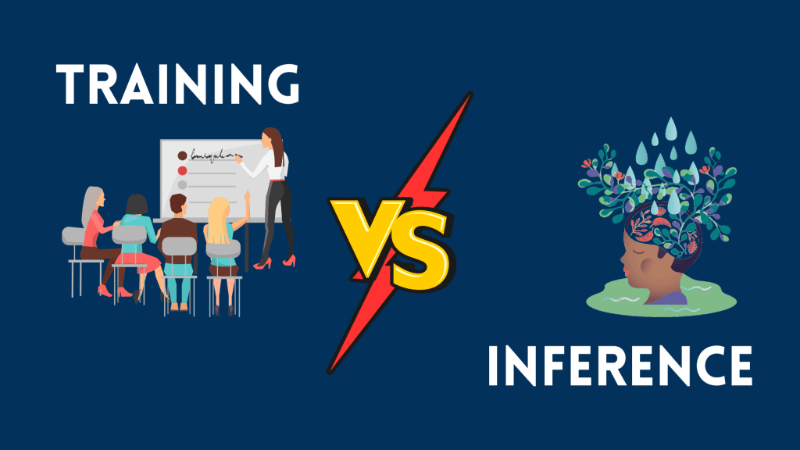1. Introduction: The Two Halves of the AI Lifecycle
Creating and deploying artificial intelligence might seem like magic, but it’s actually a structured process built on two distinct, critical phases: training and inference. Think of it like building and then using a powerful engine. Training is the meticulous process of constructing and fine-tuning that engine in a factory, while inference is what happens when that engine is placed in a car, powering it down the road in real-time.
Understanding the difference between these two phases isn’t just academic—it’s the foundation for building efficient, scalable, and cost-effective AI systems. The hardware, strategies, and optimizations that work for one phase can be wasteful or even counterproductive for the other. Many organizations stumble by using a one-size-fits-all approach, leading to ballooning cloud bills and sluggish performance.
This is where intelligent infrastructure management becomes paramount. Platforms like WhaleFlux are designed to optimize the underlying GPU infrastructure for both phases of the AI lifecycle. By ensuring the right resources are allocated efficiently, WhaleFlux helps enterprises achieve peak performance during the demanding training phase and guaranteed stability during the critical inference phase, all while significantly reducing overall computing costs.
2. What is AI Training? The “Learning” Phase
AI training is the foundational process where a model learns from data. It’s the extensive, knowledge-acquisition stage where we “teach” an algorithm to perform a specific task.
A perfect analogy is a student undergoing years of education. The student (the AI model) is presented with a vast library of textbooks, solved problems, and labeled examples (the training data). Through repeated study and practice, the student’s brain gradually identifies patterns, makes connections, and internalizes rules. Similarly, an AI model processes terabytes of data, adjusting its millions or billions of internal parameters (weights and biases) to minimize errors and improve its accuracy.
Key characteristics of the AI training phase include:
Goal
To learn underlying patterns from data and create a highly accurate model. The output is a trained model file that encapsulates all the learned knowledge.
Process
This is an incredibly computationally intensive and iterative process. It involves complex mathematical operations like forward propagation (making a prediction), calculating the loss (how wrong the prediction was), and backward propagation (adjusting the model’s internal parameters to reduce future errors). This cycle is repeated millions or billions of times.
Hardware Demand
Training demands massive, sustained parallel processing power. It’s not about speed for a single task, but about brute-force computation across thousands of tasks simultaneously. This is the primary domain of high-end data-center GPUs like the NVIDIA H100, H200, and A100. These processors are designed with specialized Tensor Cores that dramatically accelerate the matrix calculations at the heart of deep learning.
Duration
Training is typically a one-time event for each model version, but it can be extremely long-running. It’s not uncommon for training sophisticated models like large language models (LLMs) to take weeks or even months on powerful multi-GPU clusters.
3. What is AI Inference? The “Doing” Phase
If training is the learning, then inference is the application. AI inference is the process of using a fully trained model to make predictions or generate outputs based on new, unseen data.
Returning to our analogy, inference is the graduate student now working in their field. The years of study are complete, and the knowledge is solidified. When a real-world problem arises, the graduate applies their learned expertise to analyze the situation and provide a solution quickly. The AI model does the same: it takes a user’s input—a query, an image, a data point—and uses its pre-trained knowledge to produce an output, such as a text response, a classification, or a forecast.
Key characteristics of the AI inference phase include:
- Goal: To generate useful, actionable outputs in a production environment. The focus shifts from learning to application and user experience.
- Process: While individual inferences are far less computationally demanding than the training process, the challenge lies in scale and latency. An inference server might need to handle thousands or millions of requests per second, each requiring a rapid response. Stability and low latency are paramount.
- Hardware Demand: Inference requires a balance of performance, power efficiency, and cost. The ideal GPU depends on the workload volume and latency requirements. For high-volume, mission-critical inference (like a popular chatbot), the NVIDIA A100 offers an excellent blend of performance and reliability. For more cost-sensitive deployments, specialized applications, or edge computing, the powerful consumer-grade NVIDIA RTX 4090 can provide exceptional value.
- Duration: Inference is a continuous, ongoing process. It happens in real-time, for as long as the AI application is live and serving users.
4. Key Differences at a Glance: Training vs. Inference
To make the distinction crystal clear, here is a direct comparison of the two phases:
| Comparison Factor | AI Training | AI Inference |
| Primary Goal | Learning patterns; creating an accurate model | Applying the model; generating predictions |
| Computational Load | Extremely High (batch processing) | Moderate to High per task, but scaled massively |
| Data Usage | Historical, labeled datasets | Fresh, live, unseen data |
| Hardware Focus | Raw Parallel Power (e.g., NVIDIA H100/H200) | Performance-per-Dollar & Low Latency (e.g., NVIDIA A100/RTX 4090) |
| Frequency | One-time (per model version) | Continuous, real-time |
5. Optimizing Infrastructure for Both Phases with WhaleFlux
Managing the infrastructure for both training and inference presents a significant challenge. Training requires access to powerful, often expensive, multi-GPU clusters that are optimized for raw computation. Inference requires a scalable, stable, and cost-effective deployment environment that can handle unpredictable user traffic. Juggling these different needs can strain IT resources and budgets.
This is where WhaleFlux provides a unified solution, intelligently managing GPU resources across the entire AI lifecycle.
For the Training Phase:
WhaleFlux excels at managing and optimizing multi-GPU clusters dedicated to model training. By using intelligent resource scheduling and orchestration, it ensures that every cycle of your high-end NVIDIA H100, H200, and A100 GPUs is used efficiently. It eliminates idle time and automates the distribution of workloads, drastically reducing the time-to-train for large models. This directly translates to lower cloud computing costs and faster iteration cycles for your AI research and development teams.
For the Inference Phase:
When it’s time to deploy your model, WhaleFlux ensures it runs with high availability, low latency, and unwavering stability. It efficiently manages inference-serving GPUs (like the A100 and RTX 4090), dynamically scaling resources to meet user demand while maintaining strict performance guarantees. This means your end-users get a responsive and reliable experience, and your business avoids the revenue loss associated with downtime or slow AI services.
The core value of WhaleFlux is its ability to optimize GPU utilization across both phases. By providing a single platform to manage your AI infrastructure, it helps enterprises significantly lower their total cost of ownership and accelerate their entire AI roadmap from concept to production.
To provide maximum flexibility, WhaleFlux offers access to its range of NVIDIA GPUs (H100, H200, A100, RTX 4090) through both purchase and rental models. Whether you need to build a permanent, owned cluster for ongoing work or require additional capacity for a specific training job or a new inference workload, WhaleFlux provides the right hardware. To ensure resource stability and cost-effectiveness, rentals are available with a minimum commitment of one month.
6. Conclusion: Building a Cohesive AI Strategy
The journey of an AI model is clearly divided into two halves: training, where the “brain” is built and educated, and inference, where that brain is put to work solving real-world problems. Recognizing the fundamental differences between these stages—in their goals, computational demands, and hardware requirements—is the first step toward a successful AI strategy.
A cohesive strategy requires careful hardware consideration for both phases, balancing raw power for training with efficiency and scalability for inference. Trying to force one infrastructure setup to handle both is a recipe for inefficiency and high costs.
This is why a specialized tool like WhaleFlux is becoming essential for modern AI-driven enterprises. It provides the intelligent management layer that seamlessly bridges the gap between training and inference. By optimizing your GPU resources from the first line of training code to the millionth user inference, WhaleFlux empowers you to build better models, deploy them faster, and serve them more reliably, all while keeping your infrastructure costs under control.

